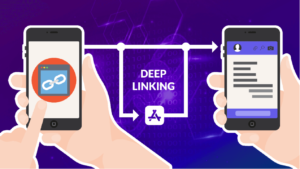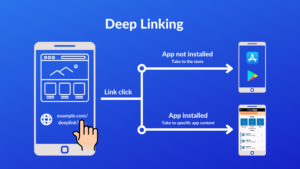
In today’s mobile-driven world, apps have become a central part of our daily lives. Whether it’s social media, e-commerce, or productivity tools, mobile apps play a crucial role in how we interact with technology. One concept that has gained prominence in mobile app development is “deep linking.” This article explores what mobile app deep linking is, how it works, and why it’s important for businesses and app developers.
What is Deep Linking?
DL refers to the practice of using a hyperlink to direct users to a specific page or location within a mobile app, rather than simply opening the app’s home page. In essence, it allows users to navigate directly to specific content, functionality, or a particular screen within the app, creating a seamless and efficient user experience. Deep links can be embedded in emails, websites, social media posts, push notifications, and even other mobile apps.
Types of Deep Linking
There are several types of DL, each serving a unique purpose in mobile app development:
- Basic DL: This involves opening a specific page within an app when a user clicks a link. However, it assumes that the app is already installed on the user’s device. If the app is not installed, the link may not work as intended, resulting in a poor user experience.
- Deferred DL: This type of deep linking addresses the limitation of basic deep linking by allowing users to be redirected to the appropriate app store to download the app if it’s not installed. After installation, the app opens to the desired page, ensuring a seamless transition.
- Contextual DL: This is the most advanced form of deep linking, enabling developers to track the context in which the deep link was used. It allows personalized content delivery and a more tailored user experience, as it retains information about where the user came from and what they are looking for.
Importance of Deep Linking
DL plays a significant role in enhancing the mobile app experience for users and benefiting businesses in several ways:
- Improved User Experience: DL streamlines user navigation, allowing them to access specific content or features directly. This reduces friction and enhances the overall user experience, leading to higher engagement and retention.
- Increased Conversions: By directing users to specific pages within an app, DL can boost conversion rates. For example, an e-commerce app can use deep links to direct users to a product page, making it easier for them to make a purchase.
- Enhanced Marketing Campaigns: DL is a valuable tool for marketing campaigns. It allows marketers to create targeted campaigns that lead users to specific app content, making it easier to measure campaign effectiveness and ROI.
- Cross-Platform Consistency: Deep linking creates a consistent user experience across different platforms. Whether users access the link from an email, a website, or another app, deep linking ensures they land on the right page within the app.
You can also learn more about Deep Linking by just clicking here!

Conclusion
Mobile app deep linking is a powerful technique that enhances user experience and drives business results. By allowing users to navigate directly to specific content within an app, DL reduces friction and increases engagement. Additionally, it opens up new opportunities for marketing campaigns, conversion optimization, and cross-platform consistency. As mobile apps continue to evolve, DL is likely to play an even more significant role in shaping the way we interact with technology.
If you have any query about this, feel Free to Contact Us today to resolve your issues!


